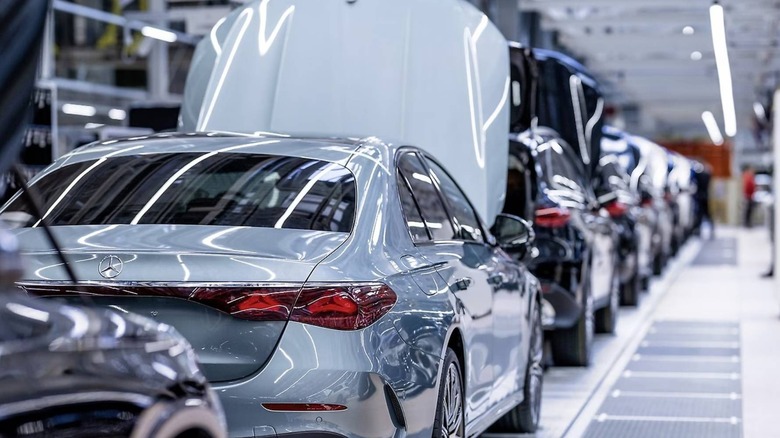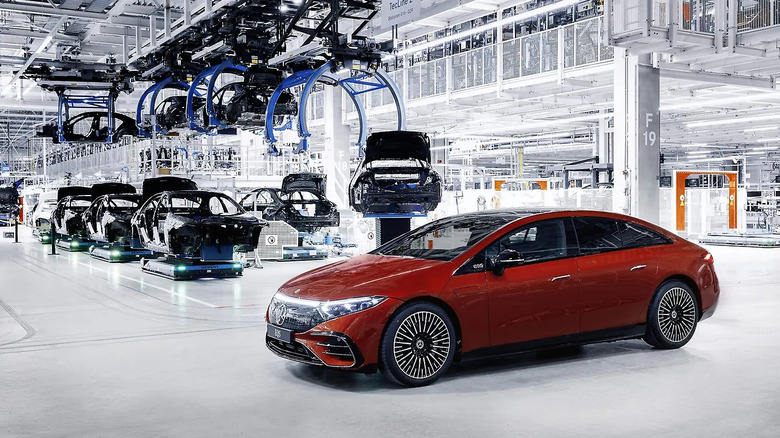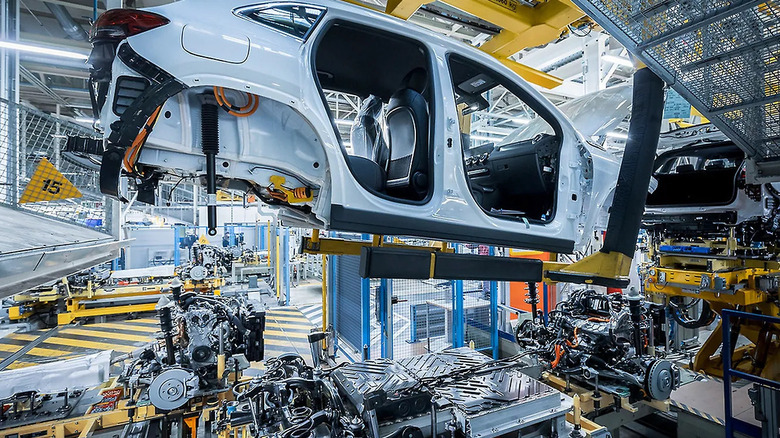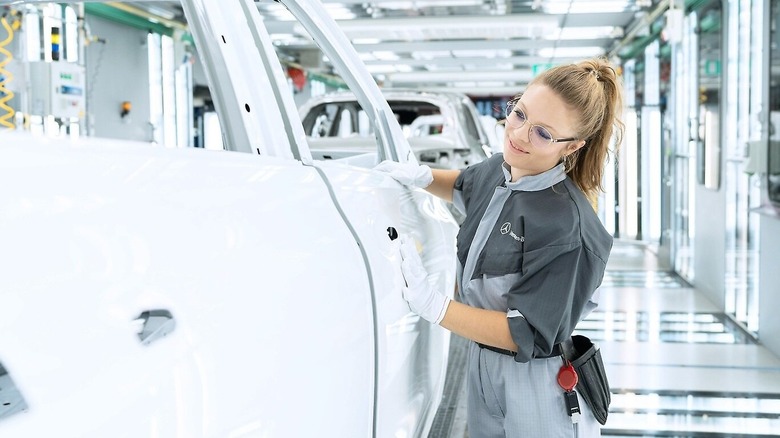Who Owns Mercedes-Benz And Where Are Its Cars Made?
Few brands command as much prestige as Mercedes-Benz — a name synonymous with luxury and performance. From its signature logo to its advanced technology, Mercedes-Benz is widely regarded as a symbol of success. But behind the sleek designs, three-pointed star emblem, and state-of-the-art engineering lies a rich history that dates back to 1926. That's when Karl Benz, Gottlieb Daimler, Wilhelm Maybach, and Emil Jellinek joined forces to establish what would become one of the most admired car manufacturers in the world.
As a pioneer in the luxury automotive space, Mercedes-Benz has continuously pushed the boundaries of safety, comfort, and performance. In 1994, the company introduced its now-familiar naming system, categorizing models into distinctive classes such as the C-Class and G-Class. Today, Mercedes-Benz operates under the umbrella of Mercedes-Benz Group AG, which was rebranded from the Daimler Auto Group in 2022 to highlight its focus on luxury and electric mobility. Mercedes-Benz Group AG is headquartered in Stuttgart, Germany, and its vehicles and engines are produced in several countries across five continents.
Who owns Mercedes-Benz?
Mercedes-Benz Group AG is a publicly traded entity with nearly 1 billion shares distributed worldwide. The BAIC Group, a Chinese automotive conglomerate, holds 9.98% of the company's voting rights, making it the largest shareholder. Another significant player is Geely founder Li Shufu, who maintains a 9.69% stake through Tenaciou3 Prospect Investment Limited. The Kuwait Investment Authority, a long-term investor, has been involved since 1974.While these Far and Middle Eastern entities now hold a significant interest in the company, Mercedes-Benz has historical roots firmly planted in Central Europe.
Carl Benz unveiled the Patent Motorwagen, the world's first gasoline-powered car, in 1901. He then went on to form Benz and Cie. (Cie. is the abbreviation for kompanie, the German word for company). Although this vehicle was only affordable to the wealthy elite, the invention helped establish automobiles as a viable technology. Around the same period, Austrian entrepreneur Emil Jellinek, who collaborated with Daimler-Motoren-Gesellschaft (DMG), trademarked the name "Mercedes" in honor of his daughter. Jellinek marketed these early vehicles to billionaires such as Nelson Rockefeller, John Jacob Astor, and J.P. Morgan, helping elevate the prestige of Mercedes-branded cars.
By 1926, the individual successes of Benz and Cie. and DMG prompted a merger that formed the Mercedes-Benz we know today. The iconic three-pointed star — which was introduced in 1909 — became the brand's official emblem after the merger. Originally blue, the logo was altered to silver in 1934. In the decades since, Mercedes-Benz has been at the forefront of innovation, developing technologies like the first fully independent suspension in 1931, the Anti-lock Braking System in 1978, and Car-to-X Communication, which enables vehicles to share real-time traffic data.
Where are Mercedes-Benz cars made?
Mercedes-Benz operates a global network of manufacturing plants, each specializing in specific models. One of the company's largest production sites is its plant in Bremen, Germany, which has been assembling cars since 1978.This factory has produced over 10 million vehicles and is responsible for both plug-in hybrids and fully electric models. Alongside the Mercedes-Benz EQE luxury EV, this plant makes traditional C-Class, CLE, and GLC models. The Bremen facility's output also includes high-performance cars like the powerful AMG SL roadster and AMG GT. The Mercedes-Benz East London plant is not in England, but rather South Africa. Since 2021, this facility has played a key role in the global supply chain by producing C-Class sedan models for both left- and right-hand drive markets.
The Mercedes-Benz plant in Kecskemet, Hungary, also opened in 2021. At this facility, vehicles with combustion engines, plug-in hybrids, and fully electric drivetrains roll off the same assembly line. The Kecskemet plant primarily focuses on compact models, producing the A-Class, CLA Coupe, and entry-level EQB electric SUV.
Asia, Germany, and USA plants
In China, the Beijing Benz Automotive Co., Ltd (BBAC) facility — which is a joint venture with BAIC Motor — has been producing Mercedes-Benz vehicles since 2005. It's a vital hub for the brand's electric vehicle lineup, assembling models such as the Mercedes-Benz EQA crossover, EQB, and EQE. The Beijing plant also manufactures extended-wheelbase versions of the C-Class, E-Class, and GLC, which cater to the Chinese market. The Mercedes-Benz plant in Rastatt, Germany began operating in 1992. It produces compact SUVs and hatchbacks, including the A-Class, B-Class, GLA, and electric EQA. Like other Mercedes-Benz factories, this facility produces internal combustion engine-powered, plug-in hybrid, and electric models on the same lines.
One of the most history-rich Mercedes-Benz facilities is its plant in Sindelfingen, Germany, which dates back to 1915. This factory manufactures luxury-class models like the E-Class, S-Class, Maybach S-Class, EQS, and GLC. The Sindelfingen facility is also home to Factory 56, one of the world's most advanced automotive assembly halls. Since 1995, Mercedes-Benz has also produced vehicles in Tuscaloosa, Alabama. There, the company makes the GLE, GLS, and ultra-luxurious Maybach GLS. Since 2022, production at this facility has expanded to include electric SUVs, including the EQS and EQE.



